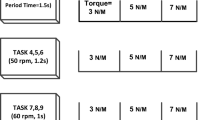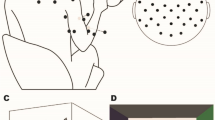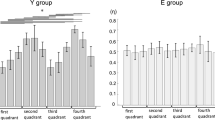Abstract
The execution of rhythmical motor tasks requires the control of multiple skeletal muscles by the Central Nervous System (CNS), and the neural mechanisms according to which the CNS manages their coordination are not completely clear yet. In this study, we analyze the distribution of the neural drive shared across muscles that work synergistically during the execution of a free pedaling task. Electromyographic (EMG) activity was recorded from eight lower limb muscles of eleven healthy untrained participants during an unconstrained pedaling exercise. The coordinated activity of the lower limb muscles was described within the framework of muscle synergies, extracted through the application of nonnegative matrix factorization. Intermuscular synchronization was assessed by calculating intermuscular coherence between pairs of EMG signals from co-active, both synergistic and non-synergistic muscles within their periods of co-activation. The spatiotemporal structure of muscle coordination during pedaling was well represented by four muscle synergies for all the subjects. Significant coherence values within the gamma band (30–60 Hz) were identified only for one out of the four extracted muscle synergies. This synergy is mainly composed of the activity of knee extensor muscles, and its function is related to the power production and crank propelling during the pedaling cycle. In addition, a significant coherence peak was found in the lower frequencies for the GAM/SOL muscle pair, possibly related to the ankle stabilizing function of these two muscles during the pedaling task. No synchronization was found either for the other extracted muscle synergies or for pairs of co-active but non-synergistic muscles. The obtained results seem to suggest the presence of intermuscular synchronization only when a functional force production is required, with the observed gamma band contribution possibly reflecting a cortical drive to synergistic muscles during pedaling.





Similar content being viewed by others
References
Amjad AM, Halliday DM, Rosenberg JR, Conway BA (1997) An extended difference of coherence test for comparing and combining several independent coherence estimates: theory and application to the study of motor units and physiological tremor. J Neurosci Methods 73(1):69–79
Bässler U (1986) On the definition of central pattern generator and its sensory control. Biol Cybern 54(1):65–69
Bernstein NA (1967) The co-ordination and regulation of movements. Pergamon, Oxford
Bizzi E, Cheung VCK, d’Avella A, Saltiel P, Tresch M (2008) Combining modules for movement. Brain Res Rev 57(1):125–133
Bo Nielsen J (2002) Motoneuronal drive during human walking. Brain Res Rev 40(1):192–201
Bonato P, Roy SH, Knaflitz M, De Luca CJ (2001) Time-frequency parameters of the surface myoelectric signal for assessing muscle fatigue during cyclic dynamic contractions. IEEE Trans Biomed Eng 48(7):745–753
Boonstra TW, Breakspear M (2012) Neural mechanisms of intermuscular coherence: implications for the rectification of surface electromyography. J Neurophysiol 107(3):796–807
Boonstra TW, Daffertshofer A, Roerdink M, Flipse I, Groenewoud K, Beek PJ (2009) Bilateral motor unit synchronization of leg muscles during a simple dynamic balance task. Eur J Neurosci 29(3):613–622
Brown P (2000) Cortical drives to human muscle: the Piper and related rhythms. Prog Neurobiol 60(1):97–108
Brown P, Salenius S, Rothwell JC, Hari R (1998) Cortical correlate of the Piper rhythm in humans. J Neurophysiol 80(6):2911–2917
Brown P, Farmer SF, Halliday DM, Marsden J, Rosenberg JR (1999) Coherent cortical and muscle discharge in cortical myoclonus. Brain 122(3):461–472
Burke RE, Degtyarenko AM, Simon ES (2001) Patterns of locomotor drive to motoneurons and last-order interneurons: clues to the structure of the CPG. J Neurophysiol 86(1):447–462
Cappellini G, Ivanenko YP, Poppele RE, Lacquaniti F (2006) Motor patterns in human walking and running. J Neurophysiol 95(6):3426–3437
Castronovo AM, Conforto S, Schmid M, Bibbo D, D’Alessio T (2013) How to assess performance in cycling: the multivariate nature of influencing factors and related indicators. Front Physiol 4:116
Clark DJ, Ting LH, Zajac FE, Neptune RR, Kautz SA (2010) Merging of healthy motor modules predicts reduced locomotor performance and muscle coordination complexity post-stroke. J Neurophysiol 103(2):844
Clark DJ, Kautz SA, Bauer AR, Chen YT, Christou EA (2013) Synchronous EMG activity in the piper frequency band reveals the corticospinal demand of walking tasks. Ann Biomed Eng 41(8):1778–1786
Conway BA, Halliday DM, Farmer SF, Shahani U, Maas P, Weir AI, Rosenberg JR (1995) Synchronization between motor cortex and spinal motoneuronal pool during the performance of a maintained motor task in man. J Physiol 489(Pt 3):917–924
Danna-dos-Santos A, Slomka K, Zatsiorsky VM, Latash ML (2007) Muscle modes and synergies during voluntary body sway. Exp Brain Res 179(4):533–550
Danna-Dos-Santos A, Boonstra TW, Degani AM, Cardoso VS, Magalhaes AT, Mochizuki L, Leonard CT (2013) Multi-muscle control during bipedal stance: an EMG–EMG analysis approach. Exp Brain Res 232(1):75–87
Danna-Dos-Santos A, Degani AM, Boonstra TW, Mochizuki L, Harney AM, Schmeckpeper MM et al (2015) The influence of visual information on multi-muscle control during quiet stance: a spectral analysis approach. Exp Brain Res 233(2):657–669
d’Avella A, Lacquaniti F (2013) Control of reaching movements by muscle synergy combinations. Front Comput Neurosci 7:42
De Marchis C, Schmid M, Bibbo D, Bernabucci I, Conforto S (2013a) Inter-individual variability of forces and modular muscle coordination in cycling: a study on untrained subjects. Hum Mov Sci 32(6):1480–1494
De Marchis C, Schmid M, Bibbo D, Castronovo AM, D’Alessio T, Conforto S (2013b) Feedback of mechanical effectiveness induces adaptations in motor modules during cycling. Front Comput Neurosci 7:35
Donoghue JP, Sanes JN, Hatsopoulos NG, Gaál G (1998) Neural discharge and local field potential oscillations in primate motor cortex during voluntary movements. J Neurophysiol 79:159–173
Faes L, Pinna GD, Porta A, Maestri R, Nollo G (2004) Surrogate data analysis for assessing the significance of the coherence function. IEEE Trans Biomed Eng 51(7):1156–1166
Farina D, Negro F (2015) Common synaptic input to motor neurons, motor unit synchronization, and force control. Exerc Sport Sci Rev 43(1):23–33
Farina D, Cescon C, Negro F, Enoka RM (2008) Amplitude cancellation of motor-unit action potentials in the surface electromyogram can be estimated with spike-triggered averaging. J Neurophysiol 100(1):431–440
Farina D, Negro F, Jiang N (2013) Identification of common synaptic inputs to motor neurons from the rectified electromyogram. J Physiol 591(10):2403–2418
Groß J, Tass PA, Salenius S, Hari R, Freund HJ, Schnitzler A (2000) Cortico-muscular synchronization during isometric muscle contraction in humans as revealed by magnetoencephalography. J Physiol 527(3):623–631
Grosse P, Cassidy MJ, Brown P (2002) EEG–EMG, MEG–EMG and EMG–EMG frequency analysis: physiological principles and clinical applications. Clin Neurophysiol 113(10):1523–1531
Grosse P, Guerrini R, Parmeggiani L, Bonanni P, Pogosyan A, Brown P (2003) Abnormal corticomuscular and intermuscular coupling in high-frequency rhythmic myoclonus. Brain 126(2):326–342
Gwin JT, Ferris DP (2012) Beta-and gamma-range human lower limb corticomuscular coherence. Front Hum Neurosci 6:258
Halliday DM, Conway BA, Farmer SF, Rosenberg JR (1998) Using electroencephalography to study functional coupling between cortical activity and electromyograms during voluntary contractions in humans. Neurosci Lett 241(1):5–8
Hansen NL, Hansen S, Christensen LO, Petersen NT, Nielsen JB (2001) Synchronization of lower limb motor unit activity during walking in human subjects. J Neurophysiol 86(3):1266–1276
Hug F, Dorel S (2009) Electromyographic analysis of pedaling: a review. J Electromyogr Kinesiol 19:182–198
Hug F, Turpin NA, Guével A, Dorel S (2010) Is interindividual variability of EMG patterns in trained cyclists related to different muscle synergies? J Appl Physiol 108(6):1727–1736
Ivanenko YP, Cappellini G, Dominici N, Poppele RE, Lacquaniti F (2005) Coordination of locomotion with voluntary movements in humans. J Neurosci 25(31):7238–7253
Kattla S, Lowery MM (2010) Fatigue related changes in electromyographic coherence between synergistic hand muscles. Exp Brain Res 202(1):89–99
Krishnamoorthy V, Goodman S, Zatsiorsky V, Latash ML (2003) Muscle synergies during shifts of the center of pressure by standing persons: identification of muscle modes. Biol Cybern 89(2):152–161
Kristeva R, Patino L, Omlor W (2007) Beta-range cortical motor spectral power and corticomuscular coherence as a mechanism for effective corticospinal interaction during steady-state motor output. Neuroimage 36(3):785–792
Lee DD, Seung HS (1999) Learning the parts of objects by non-negative matrix factorization. Nature 401(6755):788–791
Lennard PR, Hermanson JW (1985) Central reflex modulation during locomotion. Trends Neurosci 8:483–486
McClelland VM, Cvetkovic Z, Mills KR (2012) Rectification of the EMG is an unnecessary and inappropriate step in the calculation of corticomuscular coherence. J Neurosci Methods 205(1):190–201
Mima T, Hallett M (1999) Corticomuscular coherence: a review. J Clin Neurophysiol 16(6):501
Muceli S, Boye AT, d’Avella A, Farina D (2010) Identifying representative synergy matrices for describing muscular activation patterns during multidirectional reaching in the horizontal plane. J Neurophysiol 103(3):1532–1542
Norton JA, Gorassini MA (2006) Changes in cortically related intermuscular coherence accompanying improvements in locomotor skills in incomplete spinal cord injury. J Neurophysiol 95(4):2580–2589
Omlor W, Patino L, Hepp-Reymond MC, Kristeva R (2007) Gamma-range corticomuscular coherence during dynamic force output. Neuroimage 34(3):1191–1198
Patino L, Omlor W, Chakarov V, Hepp-Reymond MC, Kristeva R (2008) Absence of gamma-range corticomuscular coherence during dynamic force in a deafferented patient. J Neurophysiol 99(4):1906–1916
Perret C, Cabelguen JM (1980) Main characteristics of the hindlimb locomotor cycle in the decorticate cat with special reference to bifunctional muscles. Brain Res 187(2):333–352
Petersen TH, Willerslev-Olsen M, Conway BA, Nielsen JB (2012) The motor cortex drives the muscles during walking in human subjects. J Physiol 590(10):2443–2452
Poston B, Danna-Dos Santos A, Jesunathadas M, Hamm TM, Santello M (2010) Force-independent distribution of correlated neural inputs to hand muscles during three-digit grasping. J Neurophysiol 104:1141–1154
Salenius S, Hari R (2003) Synchronous cortical oscillatory activity during motor action. Curr Opin Neurobiol 13(6):678–684
Salenius S, Portin K, Kajola M, Salmelin R, Hari R (1997) Cortical control of human motoneuron firing during isometric contraction. J Neurophysiol 77(6):3401–3405
Schoffelen JM, Oostenveld R, Fries P (2005) Neuronal coherence as a mechanism of effective corticospinal interaction. Science 308(5718):111–113
Scholz JP, Schöner G (1999) The uncontrolled manifold concept: identifying control variables for a functional task. Exp Brain Res 126(3):289–306
Semmler JG, Ebert SA, Amarasena J (2013) Eccentric muscle damage increases intermuscular coherence during a fatiguing isometric contraction. Acta Physiol 208(4):362–375
Severini G, Conforto S, Schmid M, D’Alessio T (2012) A multivariate auto-regressive method to estimate cortico-muscular coherence for the detection of movement intent. Appl Bionics Biomech 9(2):135–143
Smith JC, Abdala AP, Borgmann A, Rybak IA, Paton JF (2013) Brainstem respiratory networks: building blocks and microcircuits. Trends Neurosci 36(3):152–162
Terry K, Griffin L (2008) How computational technique and spike train properties affect coherence detection. J Neurosci Methods 168(1):212–223
Welch PD (1967) The use of fast Fourier transform for the estimation of power spectra: a method based on time averaging over short, modified periodograms. IEEE Trans Audio Electroacoust 15(2):70–73
Zhong G, Shevtsova NA, Rybak IA, Harris-Warrick RM (2012) Neuronal activity in the isolated mouse spinal cord during spontaneous deletions in fictive locomotion: insights into locomotor central pattern generator organization. J Physiol 590(19):4735–4759
Conflict of interest
We declare that we have no conflict of interest with the present manuscript.
Author information
Authors and Affiliations
Corresponding author
Rights and permissions
About this article
Cite this article
De Marchis, C., Severini, G., Castronovo, A.M. et al. Intermuscular coherence contributions in synergistic muscles during pedaling. Exp Brain Res 233, 1907–1919 (2015). https://doi.org/10.1007/s00221-015-4262-4
Received:
Accepted:
Published:
Issue Date:
DOI: https://doi.org/10.1007/s00221-015-4262-4




